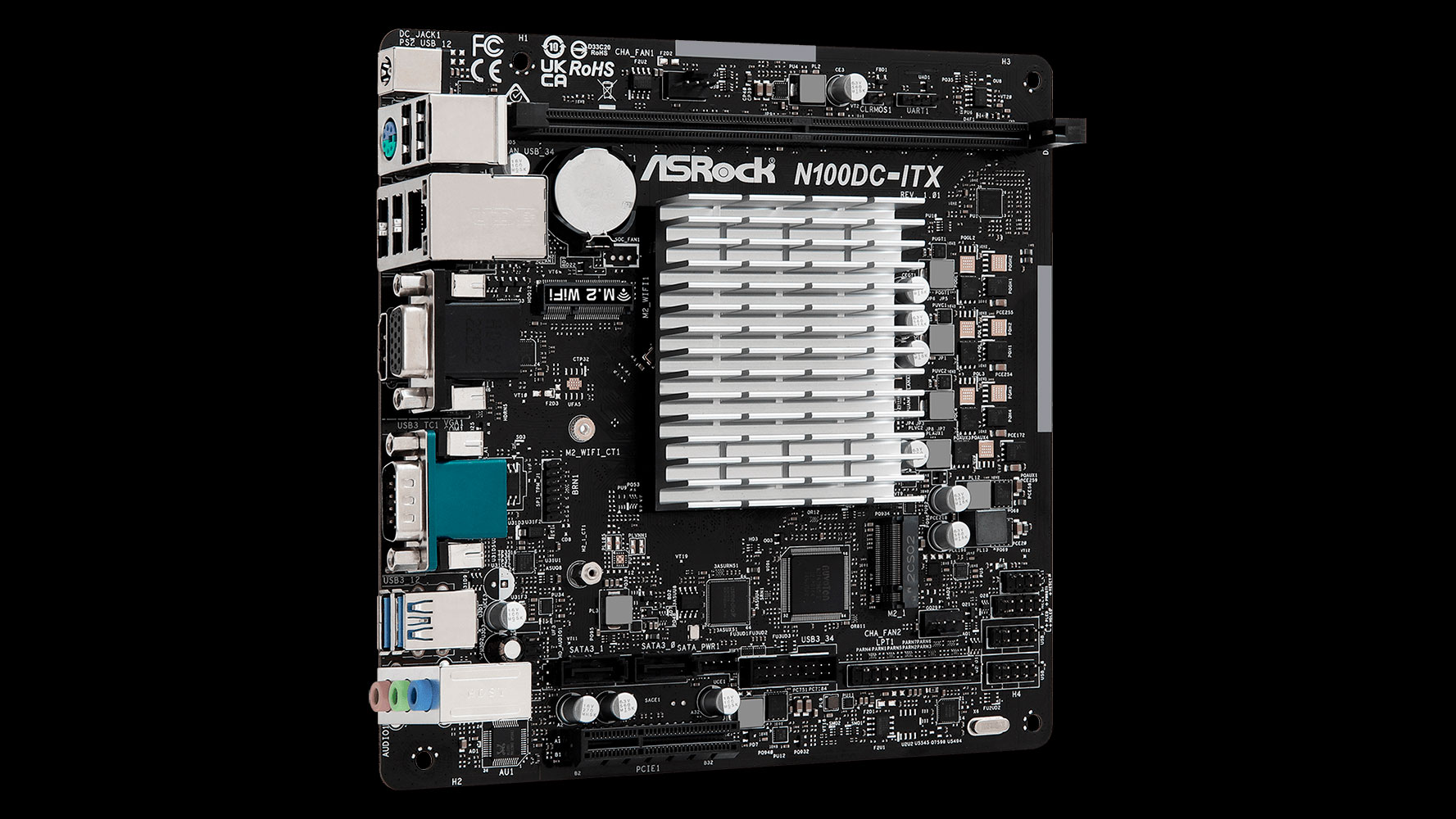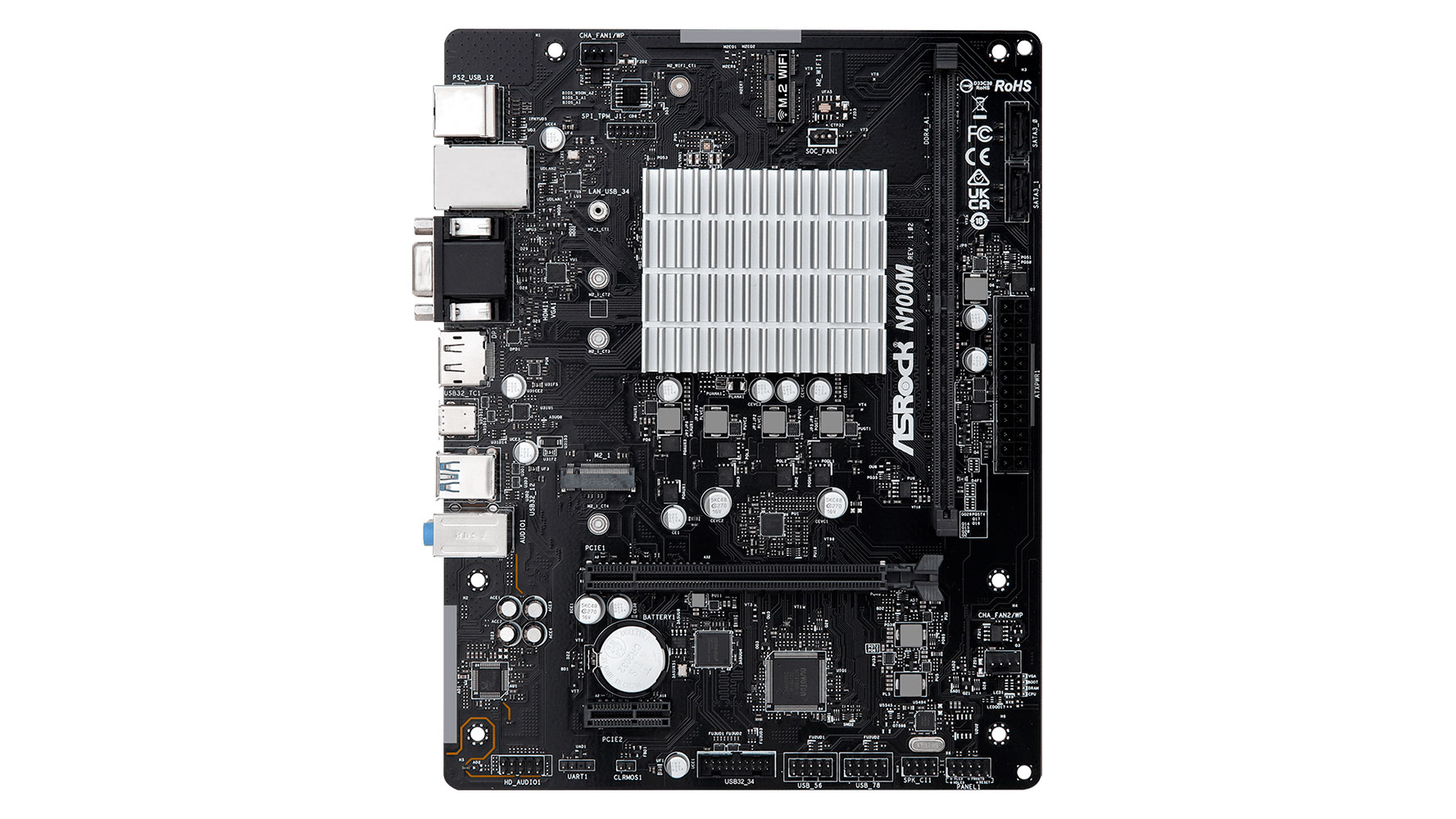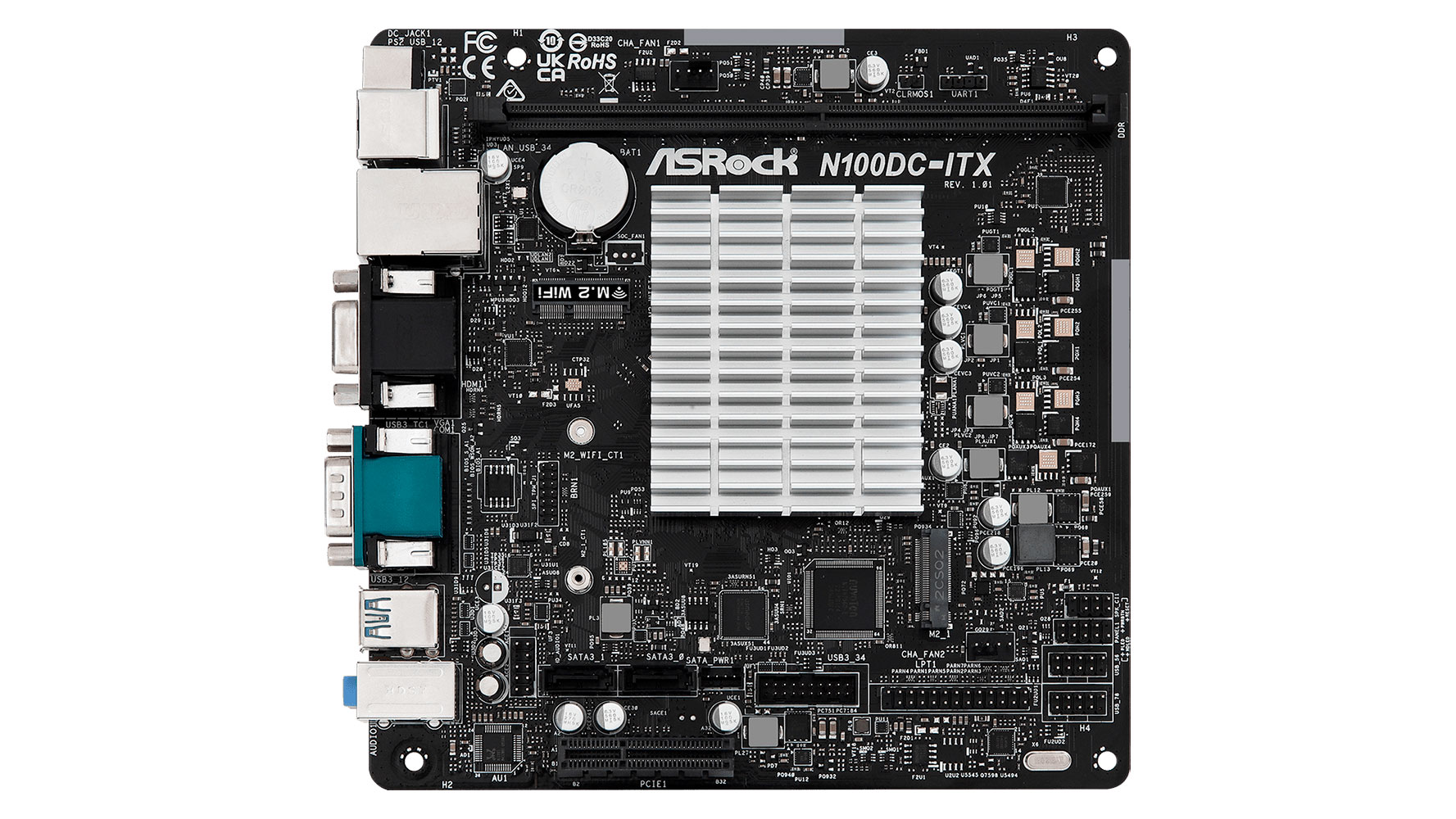
ASRock has revealed the N100M and N100DC-ITX motherboards for small-form-factor (SFF) systems. The two new motherboards leverage Intel's low-powered Alder Lake-N processors, specifically, the N100.
Alder Lake-N, a product of the Intel 7 node (previously known as the 10nm SuperFin process), is essentially Alder Lake without the P-cores that cater to entry-level mobile devices. However, the power-efficient chips, whose TDPs vary between 6W and 12W, are also popular for embedded applications. The N100M and N100DC-ITX employ the N100. The quad-core processor rocks four E-cores with a 3.4 GHz boost clock and 6MB of L3 cache.
The N100M adheres to the microATX form factor, whereas the N100DC-ITX arrives as a mini-ITX motherboard. Both models have a humble power delivery subsystem with a 2+1+1 design. It's a more than reasonable design since the N100 is a 6W chip. As a result, ASRock cools the N100 with a passive heatsink. As a result, the N100M and N100DC-ITX feature a fanless cooling design, emitting zero noise during operation. The N100M draws power from a standard 24-pin power connector. On the contrary, the N100DC-ITX is outfitted with a DC jack compatible with 19V power adapters.
The motherboards come with a single DDR4 memory slot. By default, the N100 only supports a single memory channel and memory modules up to DDR4-3200, DDR5-4800, or LPDDR5-4800. In ASRock's case, the vendor opted for DDR4 memory support, which helps lower the cost of investment for the consumer because DDR5 is still pretty pricey. The N100 officially accommodates up to 16GB; however, ASRock claims to support up to 32GB on the N100M and N100DC-ITX.


The N100 sports the Intel UHD Graphics Xe engine. In addition, it has 24 EUs that clock up to 750 MHz. The iGPU may be useless for gaming, but it's excellent for encoding and decoding workloads since it supports 10-bit HEVC and VP9 encoding, decoding, and AV1 decoding. The N100M offers one HDMI 2.1 port, DisplayPort 1.4 output, and a D-sub port. The N100DC-ITX, on the other hand, doesn't have the DisplayPort 1.4 output.
Both motherboards offer a single PCIe 3.0 x16 expansion slot electrically limited to x2. However, the N100M has an additional PCIe 3.0 x1 expansion slot for consumers that need more expandability. Unfortunately, there's no wireless connectivity on either motherboard. However, ASRock incorporated an M.2 socket (Key E) to allow users to install an M.2 2230 wireless module separately.
The motherboards' other features are nearly identical. They provide one M.2 slot that runs at PCIe 3.0 x2 for drives up to 80mm long and two SATA III connectors. A Realtek 8111H controller drives the single Gigabit Ethernet port; meanwhile, the Realtek ALC897 audio codec provides a 7.1-channel audio experience.
The N100M's rear panel has one USB 3.2 Gen 2 Type-C port, two USB 3.2 Gen 1 ports, and four USB 2.0 ports. In addition, a PS/2 combo port is available for users that still use that interface. The N100DC-ITX presents a slightly different layout. ASRock swapped the USB 3.2 Gen 2 Type-C port for a regular serial port.
ASRock didn't share the pricing or availability for the new motherboards.







